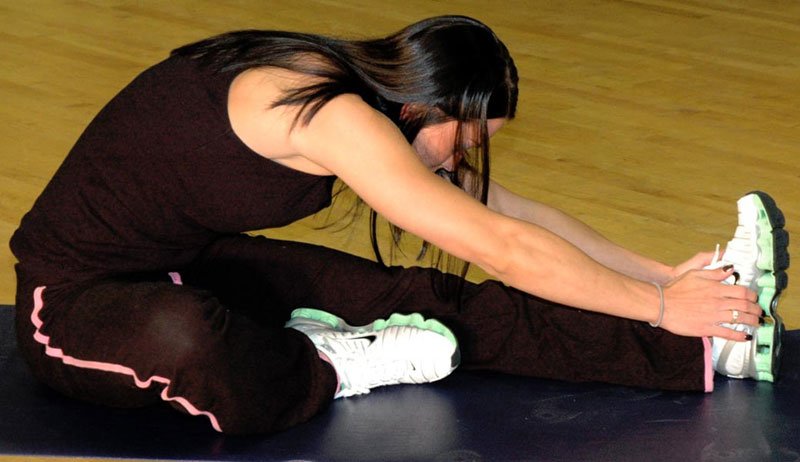Although stretching is a very important aspect of keeping mobile and supple, there are still some misconceptions as to how stretches should be incorporated into a workout regimen.
People tend to be blind to the benefits that regular stretching can bring, and to the fact that there doesn't even have to be much time set aside. It is very important to develop and maintain some sort of stretching regimen because weight training tightens muscles.
You don't have to be a muscular beast either in order to experience the tightening effects of weight training (or any type of exercise, rather). When you weight train, you incur tiny tears in your muscles. During the course of around 24-73 hours, your body works at repairing those muscle tears, resulting in muscles that are a bit larger, stronger, and tighter. Incorporating stretching into your routine will help fend away muscle tightness, and even improve your flexibility (provided the stretches are done long enough and often enough).
You can stretch just about any time during the course of the day. It's the perfect type of exercise because there is absolutely no equipment required, plus you won't need to shower afterwards because you won't even break a sweat doing it. The more you stretch throughout the day, the more limber your muscles will be, and the easier it will be to actually maintain your flexibility.
Stretching the right way involves stretching to the point of mild tension (not pain!), and holding this position for a period of 10-30 seconds. This is what can be called an Easy stretch. This type of stretch is supposed to feel comfortable. If you stretch to a point where you do not feel comfortable, or you feel pain, it is advisable to ease off a little bit in the stretch until you reach a point where you feel comfortable.
Once you've held the position for a bit and the tension in the muscle has diminished a bit, you can now proceed to the Developmental stretch. From the position you had maintained in the Easy stretch, move little bit further until you again feel a slight tension in the muscle. Once again you will hold this position from 10-30 seconds. You should be feeling the tension in the muscle diminish somewhat. Again, if you feel uncomfortable or any pain in the muscle while in the stretch, it is important to ease up a bit to the point where you feel just a mild tension.
While stretching, it is important to maintain your breathing as naturally as possible. Don not try to hold your breath, as this will not allow to relax and get the most out of the stretch. Keep your breathing slow and rhythmical in order to avoid any sudden jerking movement that can cause your muscles to react by suddenly tightening up. If you are bending forward to one leg, for example, it is best to exhale as you bend forward. This will enable you to go down a bit further without the restrictive feeling of not being able to breathe freely.
Stretching the wrong way involves stretching to a point of pain and/or discomfort, bouncing during the stretch, and not holding the stretch for a sufficient amount of time. This is not advisable as it could lead to injury.
The stretch is a proven injury prevention technique, but if it is wrongly used, it could lead to very terrible injuries. Try stretching when you wake up tomorrow morning; the difference would be manifest.




No comments:
Post a Comment